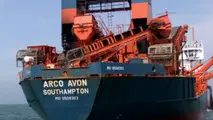Light Rail Transit Line 3 (LRT 3), Malaysia

TIN news: The 37km Light Rail Transit 3 (LRT3) is the third light rail line planned to be developed in Malaysia. The line, which includes a 35km viaduct and a 2km underground tunnel, will link Bandar Utama with Johan Setia in Klang.
Prasarana Malaysia has been appointed to develop and operate the line upon completion. Construction on the RM9bn ($20.8bn) project is expected to commence in 2017 and is scheduled for completion by August 2020.
The light rail transit line, which is part of the Greater Kuala Lumpur / Klang Valley (GKL/KV) Land Public Transport Masterplan of the Land Public Transport Commission (SPAD), will provide connectivity to the western part of GKL/KV.
The project is expected to benefit 74,000 passengers and 500,000 residents across the alignment by improving connectivity and reducing traffic congestion. It is also anticipated to strengthen communities in Petaling Jaya, Shah Alam and Klang by promoting mixed-use real estate development around its stations.
Development of the project is also expected to stimulate economic growth in the region and create employment for approximately 2,000 personnel during the construction phase.
LRT3 route details
The LRT3 line route is divided into three main segments. The first segment will begin from Bandar Utama and end at the proposed Persada PLUS station. It will pass through Damansara Utama, Taman Kayu Ara Indah, Puncak Damansara Condominium and Dataran Prima areas.
Segment two will start from Persada PLUS Station and pass through the Temasya, Glenmarie, Shah Alam town centre, UiTM campus and I-City Station before ending at Bukit Raja. The segment will include a 2km underground section.
The third segment of the line, situated in the MPK area, will start from Bukit Raja and pass through Kawasan 17, Jalan Meru, Klang town and Bandar Botanic to end at Johan Setia.
Stations along the new light rail line
The LRT3 will have 26 stations, five of which will be integrated stations to provide an enhanced transport link for commuters and easy interchange with the current rail system.
These stations will be integrated with MRT Bandar Utama, Kelana Jaya Line, BRT Federal Line, and the KTM Komuter Port Klang Line, and feature passenger information display system (PIDS), fire protection systems, closed-circuit televisions (CCTV) and automatic fare collection (AFC) systems.
Ten of the stations on the line will be equipped with parking areas accommodating approximately 6,000 cars.
All stations will be equipped with sustainable solutions, including rainwater harvesting technology, noise reduction and energy management systems, and natural ventilation.
Details of the rolling stock for the Malaysian light rail project
The light rail line will operate trains every two minutes. The trains will include six modular cars that are fully accessible from one end to the other. Each rail car will be 20m-long, 2.65m-wide, and 3.44m-high. The lifespan of the trains is estimated to be 30 years.
The trains will run automatically using a driverless system and communications-based train controls (CBTC). They will move at a maximum speed of 80km/h and be capable of transporting up to 36,720 passengers an hour.
LRT3 construction details
The project will encompass construction of a viaduct, elevated stations, underground stations and tunnels, and depots.
The elevated viaducts will be reinforced concrete (RC) structures situated on the road median strip and the road side. The viaducts will comprise a substructure and a superstructure, with the former consisting of pile and pile cap and the latter consisting of a box girder structure.
The elevated stations of the project will involve the construction of pile cap, column and cross head. A concourse and platform level will also be constructed.
The underground tunnel guideway and underground stations will be constructed using the cut and cover methods. Excavation will be performed for installation of excavation support or retaining a diaphragm wall, followed by installation of tunnel top floor, tunnel foundation and base slab.
The project will also include the construction of a depot in Johan Setia and installation of utilities such as internal roads, drains, sewerage facilities, telecommunication lines and electricity cables.
Contractors involved
MRCB George Kent (MRCB GK), a joint venture of Malaysian Resources Corporation and George Kent, was contracted to deliver design and construction services for the project in September 2015.
Systra received a contract to provide preliminary designs for the project. The company will design civil engineering structures including a U-shaped viaduct, the underground section, maintenance and storage facility, railway systems, operating plans, rolling stock and a complete range of interfaces.
ERE Consulting Group prepared the environmental impact assessment report for the project.
